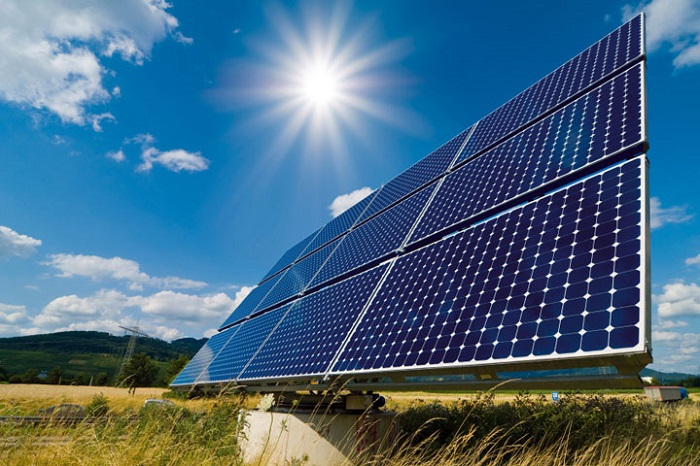105.10.07 Researchers combine solar and thermoelectric materials to create low-cost, clean energy solution
Breakthrough is considered a substantial advancement in the area of renewable energy
A team of researchers from the University of Houston and Massachusetts Institute of Technology has established a new method for the development of clean, renewable energy. They achieved this breakthrough by combining solar power with thermoelectric materials.

Specifically, the team combined concentrated solar power with segmented thermoelectric legs (made up of two separate thermoelectric materials) operating at different temperature ranges. During demonstrations, the team produced energy with an efficiency of 7.4%; based on additional calculations, they said their device could achieve an even higher efficiency of 9.6%.
For what it’s worth, their previous work resulted in an efficiency of 4.6%.
“The performance improvement is achieved by the use of segmented thermoelectric legs, a high-temperature spectrally selective solar absorber enabling stable vacuum operation with absorber temperatures up to 600 (degrees) C, and combining optical and thermal concentration,” the researchers wrote. “Our work suggests that concentrating STEGs (solar thermoelectric generators) have the potential to become a promising alternative energy technology.”
To achieve the higher rate of efficiency, the researchers used a solar absorber boosted by optical concentrators to increase the heat and improve upon overall energy density. In terms of the device’s design, the concentrator was placed on legs constructed of thermoelectric material — skudderudite for the top half of the legs and bismuth telluride for the lower half.
Now, for those unfamiliar, while solar power converts light into heat that is then used to generate electricity, thermoelectric materials produce electricity by exploiting the flow of heat current from a warmer area to a cooler area. By combining the two and incorporating the solar absorber, the team was able to take advantage of a broader range of temperatures. Combined with the strategic placement of the aforementioned thermoelectric materials, skutterudite, which performs best at temperatures above 200 degrees Centigrade, and bismuth telluride, which works best at temperatures below that level, the team was able to boost the device’s overall power-generating efficiency.
Obviously, this technology won’t be replacing large-scale power plants any time soon; rather, it’s meant to serve isolated areas that aren’t on a traditional electric grid. It could eventually be scaled up to power small clusters of homes or businesses, suggests Zhifeng Ren, MD Anderson Professor of physics at the University of Houston and an author of the paper. In addition to Ren, other authors on the paper include Gang Chen, Daniel Kraemer, Kenneth McEnaney, Lee A. Weinstein, and James Loomis, all of MIT, and UH researchers Qing Jie, Feng Cao, and Weishu Liu.
To learn more, download their research paper, Concentrating solar thermoelectric generators with a peak efficiency of 7.4%, which was published in Nature Energy.
Via the University of Houston
By Jeffrey Bausch
